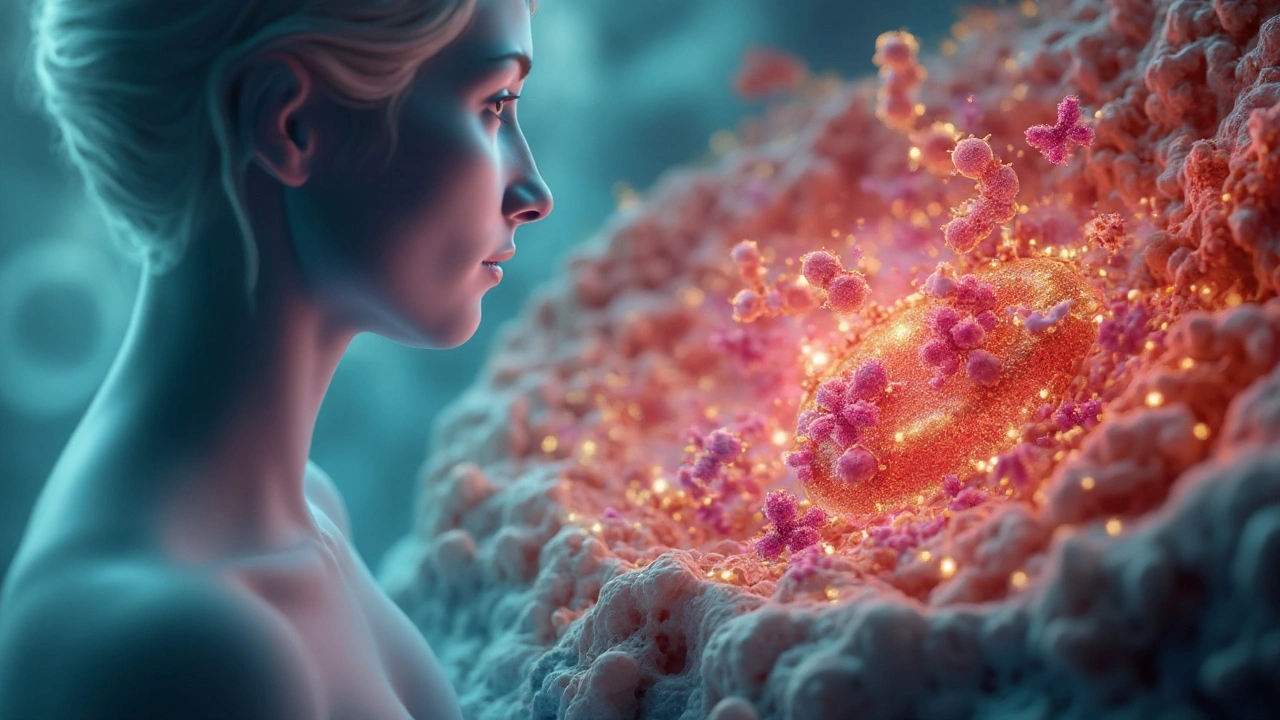Pharmacokinetics: How Drugs Move Through Your Body
Ever wonder why one pill kicks in fast and another takes days to show effects? Pharmacokinetics (PK) answers that. It’s the study of what your body does to a drug — how it’s absorbed, where it goes, how it’s changed, and how it leaves. Those four steps are usually called ADME: absorption, distribution, metabolism, and excretion. Knowing PK helps explain timing, dose, side effects, and drug interactions.
Absorption is about getting the drug into your bloodstream. Oral drugs face stomach acid, enzymes, and the liver’s "first-pass" effect, which can cut how much active drug ever reaches circulation. That’s why some meds say "take with food" or "on an empty stomach" — food can speed up or slow absorption. Routes like injections, patches, or inhalers dodge parts of this and often act faster or more predictably.
Distribution decides where the drug goes after it’s in blood. Some drugs stick to blood proteins and stay in the bloodstream; others leave blood and concentrate in fat or organs. Lipid-soluble drugs cross the blood-brain barrier more easily; water-soluble drugs may stay outside the brain. The term "volume of distribution" sums this up — it helps prescribers predict drug levels in different tissues.
Metabolism mostly happens in the liver. Enzymes (like CYP450 family) turn drugs into easier-to-excrete forms. Sometimes the metabolite is inactive; other times a prodrug becomes active only after metabolism. Enzyme inhibitors (certain antibiotics, grapefruit juice) slow metabolism and raise drug levels. Enzyme inducers (some anticonvulsants, smoking) speed it up and lower levels. That’s a big reason why drug interactions change how a medication works.
Excretion is how the body gets rid of drugs — mainly kidneys, and sometimes bile or lungs. Kidney disease slows clearance, so doses often need lowering. Dialysis can remove some drugs but not others; doctors check which ones are dialyzable when planning treatment.
Key concepts that change dosing
Half-life tells you how long a drug stays active: shorter half-life needs more frequent dosing, longer half-life builds up slowly. Steady state usually takes about 4–5 half-lives; that’s when dosing results in a stable blood level. Bioavailability measures how much of an oral dose reaches circulation. The therapeutic window is the range between a helpful dose and a harmful one — narrow windows need monitoring.
Practical tips for patients
Follow directions: take meds with or without food as instructed. Tell your doctor and pharmacist about all drugs, supplements, and alcohol — many cause PK interactions. If you have liver or kidney issues, ask about dose changes. For some drugs, clinicians measure blood levels (therapeutic drug monitoring) to fine-tune dosing. If something feels off — odd side effects or no benefit — ask about pharmacokinetics as a possible reason.
Pharmacokinetics explains a lot of everyday drug questions. Knowing a few basics helps you take medicines safer and smarter. When in doubt, ask your prescriber or pharmacist to explain how a drug behaves in your body and whether any lifestyle changes matter for your dose.
Exemestane Explained: How This Aromatase Inhibitor Works at the Molecular Level
A clear, evidence-backed breakdown of how exemestane shuts down estrogen production, who it helps, key trial data, dosing nuances, interactions, and side-effect management.
Linezolid Pharmacokinetics and Pharmacodynamics: Breaking Down the Basics
This article unpacks the pharmacokinetics and pharmacodynamics of linezolid, a go-to antibiotic for treating tough infections. You'll learn what happens in the body after taking linezolid, how it tackles bacteria, and why timing and dosing matter. Discover real-world tips for safe use, plus odd facts—like why doctors watch your food choices on this drug. Whether you're a healthcare professional or patient, you'll find clear, useful info here.


